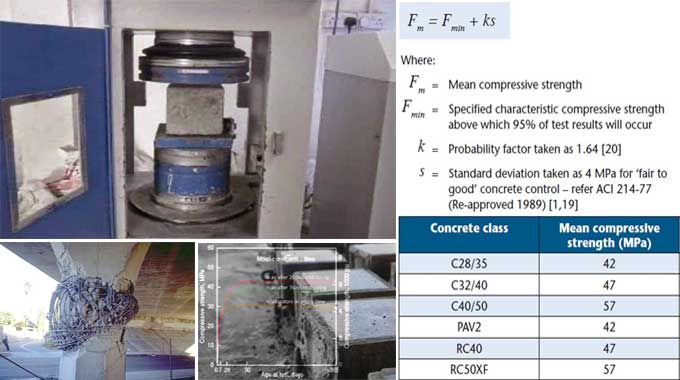
The Importance of Measuring Concrete's Compressive Strength using Curing Techniques

Cement hydration is aided at early ages by curing concrete within a range of temperatures which keeps it moist and allows it to absorb moisture. During hydration, various chemicals are formed as a result of the chemical reaction between cement and water. Several factors affect the hydration process, including the concrete's initial temperature, the ambient air temperature, and its dimensions.
Concrete must have sufficient moisture and temperature to ensure that this chemical reaction proceeds rapidly & continuously.
Importance of Concrete Curing
Your concrete structure's quality control and quality assurance depend on controlling moisture and temperature during curing. When concrete is cured correctly, it resists drying, shrinkage, and cracking, thereby preserving the performance of your structure, particularly at the cover zone. After concrete has been placed, it should be cured immediately. In addition, concrete curing conditions must be monitored continuously for seven days.
Concrete will not achieve maximum compressive strength if water evaporates from it before reaching its maximum strength. It is especially important to do so during extreme weather conditions, when your concrete slab is subjected to various environmental elements that may significantly compromise the strength of your concrete.
Efficient Concrete Curing Method
Loss of Water Reduction
You can apply impervious paper and plastic sheets directly to thoroughly wet concrete, for instance, polyethylene film. A lightweight, easy to apply moisture retarder, this material is designed to stop moisture from entering a building. In order to prevent surface damage, the concrete surface should be sufficiently hard during placement.
Concrete evaporation is retarded or reduced with membrane forming curing compounds. A pigmented white surface can be either clear or translucent. To reflect solar radiation during hot and sunny weather, white pigmented compounds are recommended.
Moisture Maintenance
Fogging & Spraying
When temperatures and humidity are well above freezing, spraying and fogging are used. Through nozzles for sprayers, fog mist is applied over flatwork to slow the evaporation of moisture. In order to minimize shrinkage cracking in plastic, fogging is used. Use burlap or other materials to prevent the concrete from drying between applications of water, if sprinkling occurs at intervals; otherwise, alternate cycles of wetting and drying can cause cracks.
Additional Forms
Formed concrete surfaces are usually sufficiently protected against moisture loss by additional forms. It is typically the case that forms remain in place as long as the construction schedule permits. Wooden forms should be kept moist during hot, dry weather, especially if they are made of wood.
Ponding
Pavements and floors are typically pond to cure because earth and sand around the perimeter of concrete can retain water. In addition to preventing concrete from losing moisture, ponding is also an effective way to maintain a uniform temperature throughout the concrete. Curing test specimens is commonly accomplished by immersing a finished concrete element.
Saturated Wet Coverings
A drying cloth is usually soaked in water before being used for curing, such as burlap, cotton mats, or rugs. It is recommended to place the materials as soon as the concrete has hardened enough to prevent surface damage. During the curing process, they should be kept continuously wet so that a film of water remains on the concrete surface.
Strength Gain Acceleration for Concrete
Heating Coils
As a form of embedded heating, coils are normally placed near the surface of concrete components. These sleeves are used in cold-weather concreting to prevent concrete from freezing.
Concrete Insulation Blankets
In order to keep concrete surfaces in a usable condition during the curing process, concrete insulation blankets are used. It is important to ensure that the concrete is hard enough to prevent surface damage before using concrete blankets.
Electrical Heated Forms
The majority of precast concrete producers use electrically heated forms and pads.
Steam Curing
There are two methods of steam curing: live steam and high-pressure steam. Steam should remain at a temperature of 140 degrees Fahrenheit or less until concrete reaches its desired strength.
To learn more, watch the following video tutorial.
Video Source: Anime_Edu - Civil Engineering Videos
Curing for Compressive Strength of Concrete
Your overall structure is directly affected by how you cure. Early in life, strength gains are rapid; but slow down over time. In addition to increasing durability, strength, water-tightness, abrasion resistance, volume stability, and resistance to freezing and thawing, proper curing will also increase volume stability.
The water content of fresh concrete is larger than the amount needed for the cement to hydrate. But excessive evaporation can delay or prevent adequate hydration, especially on the slab surface. For concrete to gain sufficient compressive strength & these techniques for retaining moisture are essential.


